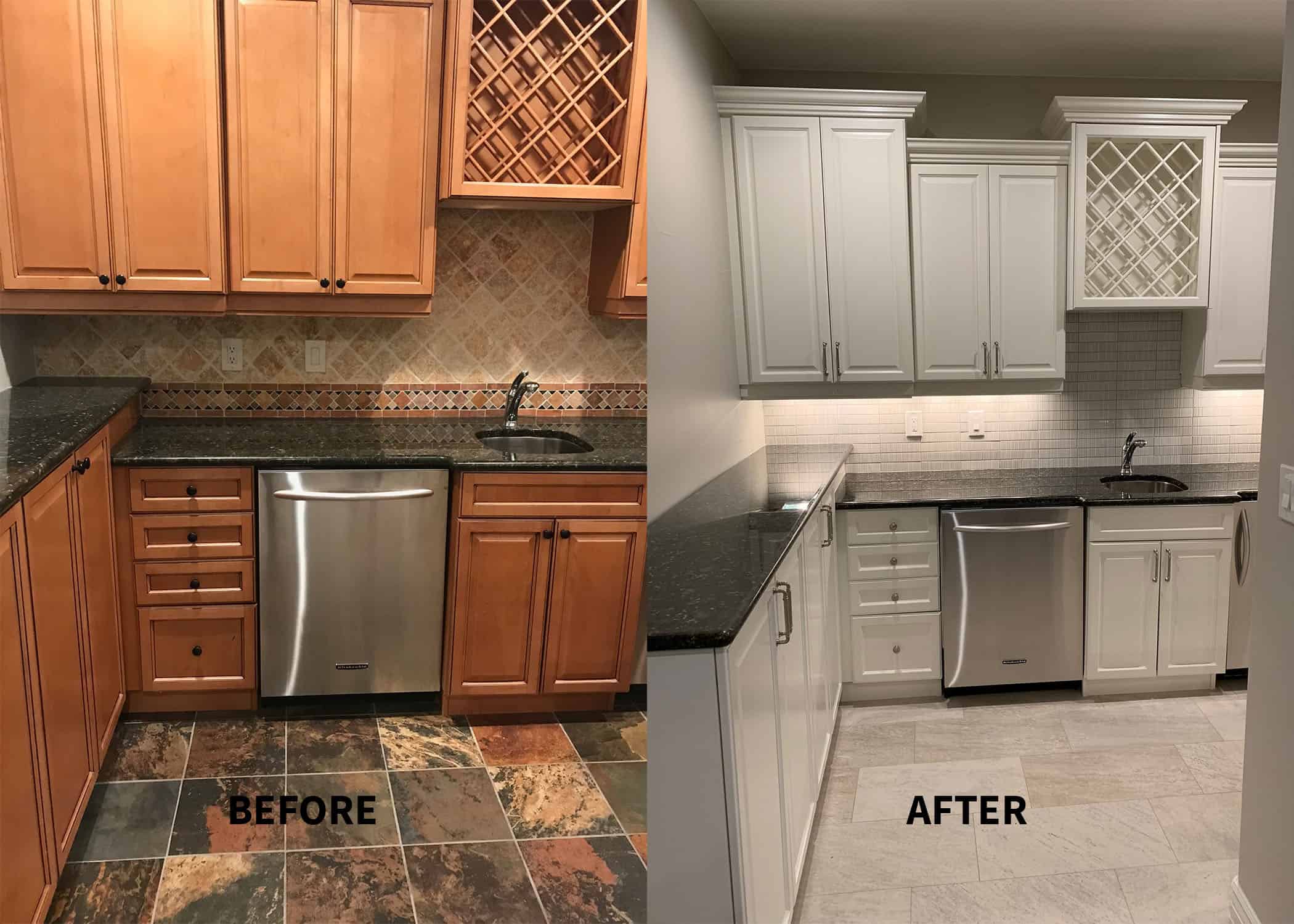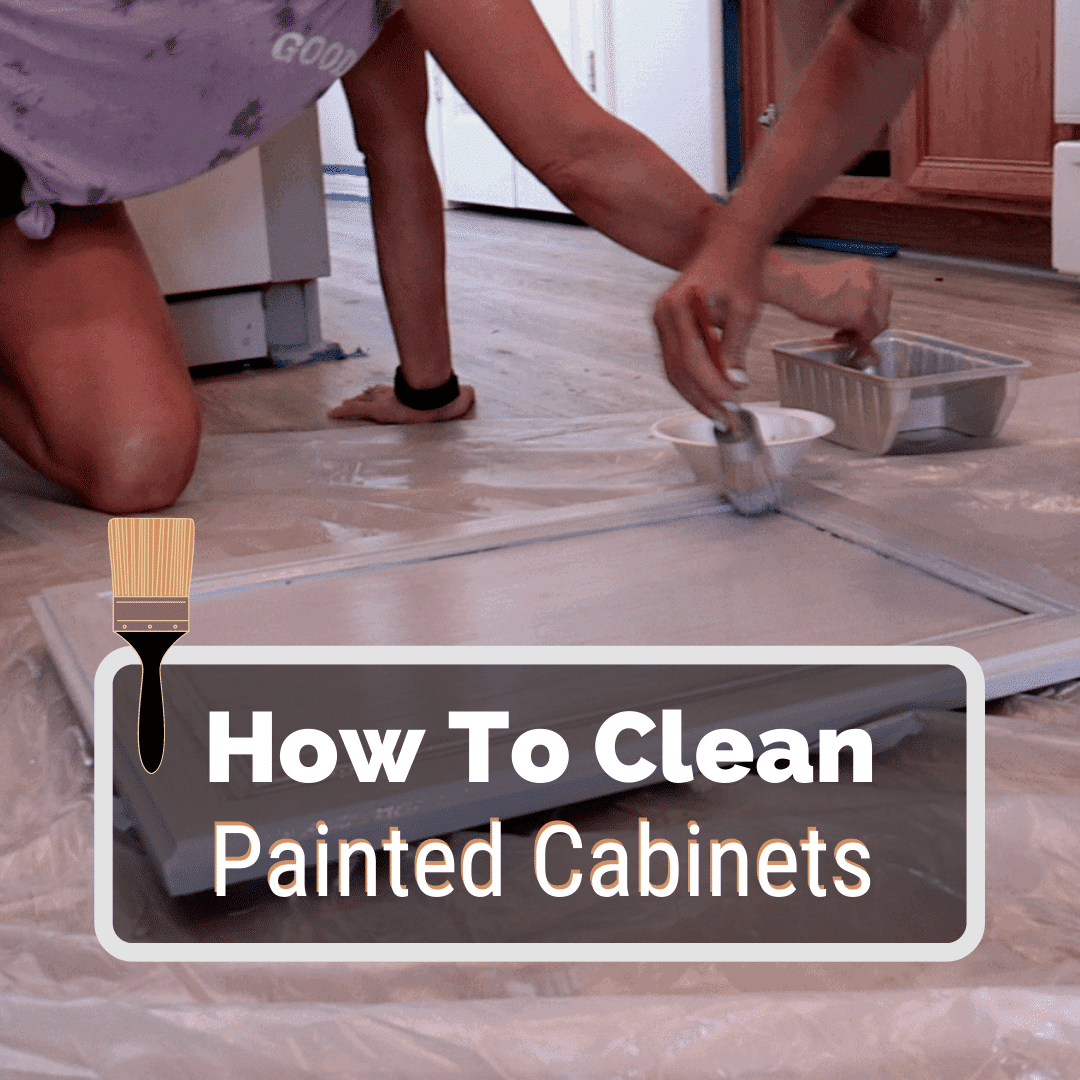Understanding Painted Wood Cabinets: Cleaning Painted Wood Cabinets

Painted wood cabinets can add a touch of elegance and vibrancy to your kitchen or bathroom. They come in a variety of colors and finishes, allowing you to create a unique and personalized space. However, it’s important to understand the different types of paint used and the common issues that can arise with these cabinets.
Types of Paint Used on Wood Cabinets
The type of paint used on wood cabinets can significantly impact their durability and longevity. Here’s a breakdown of the most common types:
- Oil-based paint: This type of paint is known for its durability and resistance to moisture. It’s a good choice for high-traffic areas like kitchens and bathrooms. However, it takes longer to dry and emits strong fumes.
- Latex paint: Latex paint is water-based and dries quickly, making it a popular choice for homeowners. It’s also easier to clean up and emits fewer fumes. However, it may not be as durable as oil-based paint, especially in high-moisture environments.
- Epoxy paint: Epoxy paint is a durable and hard-wearing option that is often used for kitchen cabinets. It’s resistant to scratches, stains, and moisture, making it ideal for high-traffic areas. However, it can be more challenging to apply than other types of paint.
- Acrylic paint: Acrylic paint is a versatile option that is available in a wide range of colors and finishes. It’s water-based and dries quickly, making it easy to clean up. However, it may not be as durable as other types of paint, especially in high-traffic areas.
Common Issues with Painted Wood Cabinets
While painted wood cabinets can be beautiful and functional, they can also experience some common issues:
- Chipping and peeling: Painted wood cabinets can chip and peel over time, especially if they’re not properly prepared or maintained. This is more likely to happen in areas that experience high traffic or moisture.
- Fading: Paint can fade over time, especially if it’s exposed to direct sunlight. This can make your cabinets look dull and faded.
- Staining: Painted wood cabinets can be susceptible to staining, especially if they’re not properly sealed. This is more likely to happen in areas that experience spills or grease.
- Moisture damage: Painted wood cabinets can be damaged by moisture, which can lead to warping, cracking, and mold growth. This is more likely to happen in areas that experience high humidity.
Identifying the Type of Paint Used on Cabinets
Determining the type of paint used on your cabinets can help you choose the right cleaning and maintenance methods. Here are some tips for identification:
- Look for the paint label: If the cabinets are relatively new, you may be able to find the original paint label. This will usually indicate the type of paint used.
- Test the paint: You can try to scrape a small amount of paint off the cabinet with a fingernail or a sharp object. Oil-based paint will feel greasy, while latex paint will feel more like plastic.
- Test with water: If you can rub off the paint with a damp cloth, it’s likely latex paint. If it doesn’t come off easily, it’s probably oil-based paint.
Cleaning Methods for Painted Wood Cabinets

The key to keeping your painted wood cabinets looking their best is to clean them regularly using the right methods. It’s a simple process that can make a big difference in the overall look of your kitchen or bathroom.
Cleaning Painted Wood Cabinets with Different Cleaning Agents
Cleaning painted wood cabinets is all about finding the right balance between cleaning power and gentle care. Here’s a step-by-step guide using different cleaning agents:
- Start with a soft cloth and warm water. This is your go-to for everyday cleaning, removing dust and light grime. Gently wipe down the cabinet surfaces, making sure to dry them thoroughly afterwards.
- For tougher messes, try a mild dish soap solution. Mix a few drops of dish soap with warm water, and use a soft sponge or cloth to gently scrub the affected areas. Rinse well with clean water and dry completely.
- For stubborn stains, consider using a baking soda paste. Make a paste with baking soda and a little water, and apply it to the stain. Let it sit for a few minutes, then scrub gently with a soft brush. Rinse well and dry completely.
- For grease and oil stains, try a solution of vinegar and water. Mix equal parts vinegar and water, and apply it to the stain. Let it sit for a few minutes, then scrub gently with a soft brush. Rinse well and dry completely.
- For heavily soiled cabinets, you can use a commercial cleaner specifically designed for painted surfaces. Follow the instructions on the label carefully.
Comparing Cleaning Methods
Choosing the right cleaning method depends on the type of dirt or grime you’re dealing with.
- Everyday Dust and Grime: A soft cloth and warm water are sufficient for everyday cleaning. This method is gentle and effective for removing dust and light grime without damaging the paint.
- Grease and Oil Stains: A vinegar and water solution is effective for breaking down grease and oil. The acidity of vinegar helps to dissolve these substances, making them easier to remove.
- Stubborn Stains: Baking soda paste is a gentle abrasive that can be used to remove stubborn stains. The abrasive action helps to lift the stain from the surface, while the baking soda also helps to deodorize the area.
- Heavily Soiled Cabinets: Commercial cleaners are formulated to remove a variety of dirt and grime. They often contain stronger cleaning agents that can be more effective on heavily soiled cabinets.
Designing a Cleaning Schedule
To keep your painted wood cabinets looking their best, it’s important to develop a regular cleaning schedule.
- Daily Cleaning: Wipe down the cabinet surfaces with a soft cloth and warm water to remove dust and fingerprints. This will help to prevent the buildup of dirt and grime.
- Weekly Cleaning: Clean the cabinet surfaces with a mild dish soap solution to remove any accumulated dirt and grime.
- Monthly Cleaning: Use a baking soda paste or vinegar and water solution to remove any stubborn stains.
- Annual Cleaning: Give your cabinets a deep clean using a commercial cleaner specifically designed for painted surfaces.
Protecting Painted Wood Cabinets

Just like your favorite sarong needs a little TLC to keep it looking vibrant and beautiful, your painted wood cabinets deserve some extra love to maintain their pristine look. A protective coating is your secret weapon against the wear and tear of everyday life, ensuring your cabinets stay stunning for years to come.
Applying Protective Coatings
Applying a protective coating is like giving your cabinets a layer of armor, shielding them from scratches, stains, and the fading effects of the sun. It’s a simple process that can make a huge difference in the longevity of your cabinets.
- Prepare the Surface: Before you start, make sure your cabinets are clean and dry. A gentle scrub with a mild detergent and a soft cloth will remove any dirt or grime. Let them dry completely before applying the coating.
- Choose the Right Coating: There are many types of protective coatings available, each with its own advantages. Consider the level of protection you need and the finish you want to achieve. For example, a polyurethane coating is great for high-traffic areas, while a wax coating can provide a soft sheen.
- Apply Evenly: Use a brush or a roller to apply the coating evenly, working in thin coats. Allow each coat to dry completely before applying the next. Be sure to follow the manufacturer’s instructions for drying time and number of coats.
- Maintain Regularly: Once your protective coating is applied, you’ll need to maintain it regularly to keep it effective. This may involve cleaning the cabinets with a mild detergent or reapplying the coating every few years.
Benefits of Protective Coatings
Protecting your painted wood cabinets with a coating is like adding a layer of sunscreen, safeguarding them from the harsh elements and keeping them looking their best. Here are some key benefits:
- Protection from Scratches and Dings: A protective coating acts as a barrier, preventing scratches and dents from marring the surface of your cabinets. This is especially important in high-traffic areas like kitchens, where cabinets are prone to bumps and bruises.
- Resistance to Stains and Spills: A good protective coating can make your cabinets more resistant to stains and spills, making cleanup a breeze. No more worrying about accidental splashes or drips ruining the finish of your beautiful cabinets.
- Enhanced Durability: Protective coatings add a layer of durability to your cabinets, making them more resistant to wear and tear. This means they’ll look great for years to come, even with regular use.
- Preservation of Color and Finish: Sunlight and humidity can cause painted wood to fade over time. A protective coating can help to preserve the original color and finish of your cabinets, keeping them looking vibrant and beautiful for longer.
Cleaning painted wood cabinets – Keeping painted wood cabinets looking their best requires regular cleaning, but it’s important to choose the right products to avoid damaging the finish. A gentle cleaner with a soft cloth is usually sufficient, and you can even use a bit of warm water and dish soap for stubborn spots.
Speaking of warm water and soap, have you seen that stunning dark laminate flooring bedroom design? It’s a great example of how a dark floor can create a warm and inviting space. Just like that dark laminate flooring, a clean and well-maintained set of painted wood cabinets can really elevate the look of your kitchen or bathroom.
Keeping painted wood cabinets looking their best requires a gentle touch. A soft cloth and mild soap are usually enough, but for deeper cleaning, consider using a specialized wood cleaner. If you’re considering a kitchen renovation, though, you might want to explore the timeless elegance of solid wood kitchen cabinets uk , which offer a natural beauty that can withstand the test of time.
Regardless of your cabinet material, regular cleaning is key to maintaining their shine and longevity.
